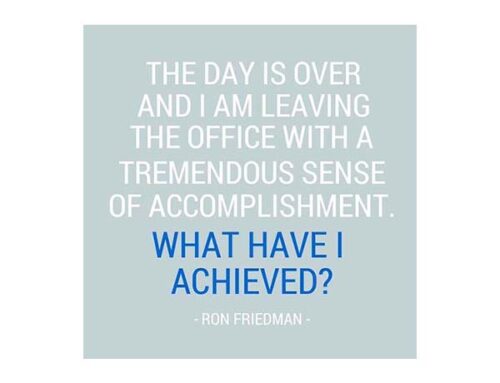Increase Your Mental Resilience & Avoid Burnout
 It is easy to miss the signs of burnout until they are already there. Burnout can affect anyone, and is increasingly used to describe a common set of symptoms facing everyone from employees to leaders. While not in the diagnostic manual used by psychiatrists, it is now used as an everyday term to explain the fatigue, stress, anxiety, and psychological stress people feel when they are overworked, have difficulty focusing, or feel a loss in motivation.
It is easy to miss the signs of burnout until they are already there. Burnout can affect anyone, and is increasingly used to describe a common set of symptoms facing everyone from employees to leaders. While not in the diagnostic manual used by psychiatrists, it is now used as an everyday term to explain the fatigue, stress, anxiety, and psychological stress people feel when they are overworked, have difficulty focusing, or feel a loss in motivation.
The long-term consequences of overdoing it can be damaging to our work, careers, and relationships. Sadly, we often focusing on telling stories of entrepreneurs in the early building days, without looking more closely at the downstream consequences of the early hustle mania: many entrepreneurs face burnout years later, long after any media mayhem has died down.
Unless you have a solid support system in place, just trying to push through and “survive” can negatively impact your relationships, your work, and your overall wellbeing. How, then, can you build mental resilience to feel good, and thrive under whatever circumstances come your way?
7 Ways to Build a Resiliency Toolkit
The biggest problem I see in how we address stress and resilience is a lack of diversity of options. It’s easy to get into a rut: go to the bar, let off steam with a drink or two, stay up late and watch television to zone out, and repeat on a daily basis. Perhaps your “tool” of choice is exercise. What happens if you sprain an ankle? Having only one strategy for staying emotionally resilient can put you in a pickle if it is no longer available.
I like to think of mental health and work resilience as needing a full toolkit of options to work well. It’s not sufficient to have just one strategy for dealing with a difficult amount of work. We need several tools that we can use and adapt, depending on the situation. Here’s how to build a “Resiliency Toolkit” to support you in the short-term and long term.
1. Move Throughout the Day
We focus on exercise, which can be extraordinarily helpful in managing stress. Yet it’s the 23 hours of the rest of the day that matter just as much as the hour of exercise. Add movement back in by taking walking meetings and calls while walking, getting off the subway one stop earlier, taking the stairs as a rule, or adding short five-minute movement practices to your morning or evening routine.
2. Take a 5-minute Breather
We’re programmed to work in 90-minute segments of max flow, and working straight through doesn’t actually result in more effective output. Schedule in breather moments into your workday by changing your default meeting settings to 25 minutes or 45 minutes to allow time space between activities. Use calendar alerts as a pause between activities.
3. Listen to Relaxing Music
Music can profoundly affect our stress levels. Add a playlist of relaxing songs or meditations to your commute or your lunch break.
4. Talk It Out
Do you have someone trustworthy that you can talk to, and are you talking to them on a regular basis? This can be a parent, a friend, or a support group (basically anyone that listens to you without judgment). If you’ve fallen out of contact, reach out to someone and say “I miss you. Can we do a weekly chat?” Chances are they’ve missed you as well and will benefit as much from connecting.
5. Dedicate One or Two Days to Getting More Sleep
Sleeping enough can be a difficult feat if you’re working on your side hustle, or if you’re the parent of a young child. Yet it is fundamental to your wellbeing. A study in 2011 found that sleep deprived participants responded more quickly to negative stimuli. Perhaps sleep will most improve your wellbeing. Instead of trying to nail a perfect routine, commit one or two nights a week to extra sleep, or add a nap into a weekend schedule instead of an event.
6. Go to Therapy
Going to therapy continues to get some stigma, but it’s life changing. It’s a privilege to have somebody who looks at the way you think, listens to you objectively without judgement, and is able to see patterns that you can’t see. Parenthood and our businesses require us to bring our best selves, and having someone dedicated to supporting you is a huge resource. If it feels awkward thinking about going to therapy, remember that learning anything new feels awkward at first.
7. Listen to What Fills You Up
Do you have a practice that grounds you and fills you up? Some examples of this could be meditating every morning, or listening to positive affirmations. Maybe taking yourself out to dinner and reading a book makes you feel restored. Doodling, art, pottery classes, or walking through the forest could be your salve. If it helps you feel better, it’s important.
You don’t have to practice all these techniques every week, but if you use a few of them each week, and rotate through them throughout the month, you are likely to develop mental resilience and stay sane. It’s important to check in with yourself weekly or monthly and gauge what practices are making the most impact to how you’re feeling, as this will allow you to make changes, if you need to.
Thanks for your Wisdom Sarah Kathleen Peck




